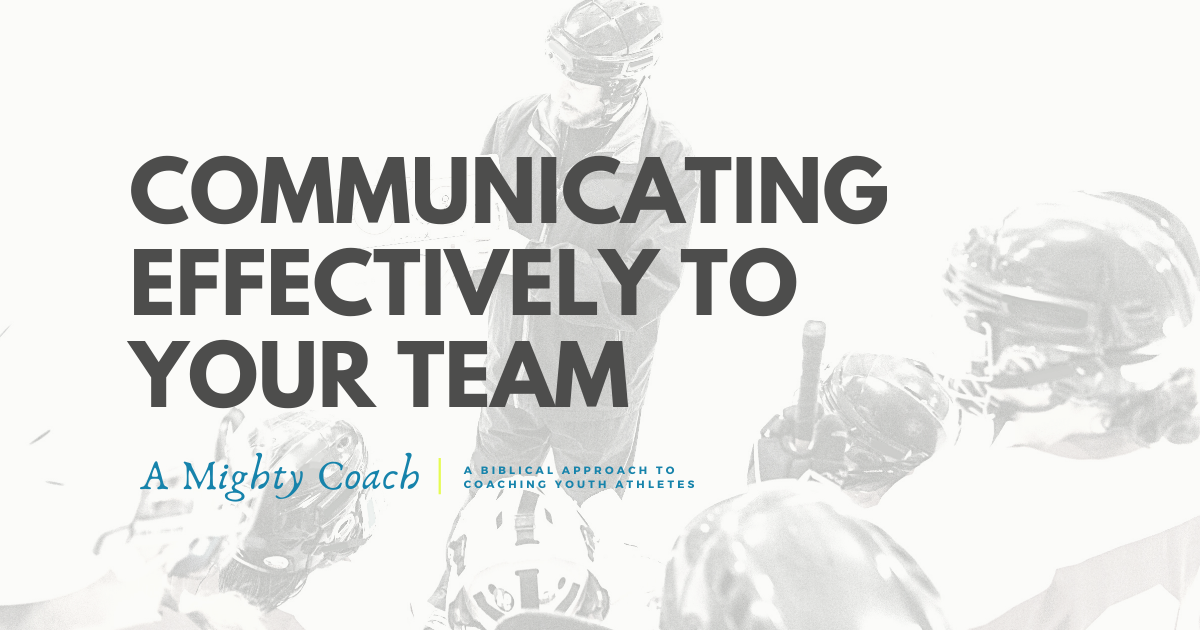Communicating Effectively To Your Team

I’ve seen hundreds of opportunities missed, relationships strained, and valuable time wasted simply because of poor communication in a team environment. Here’s how to fix it. #DailyMight
If there are four ways to communicate (verbal, non verbal, visual, written), then there are potentially three different alternatives to the way you feel is best to do so. By making the effort to find out how those around you prefer to communicate – you are valuing the most important step in communicating with them effectively. #DailyMight
I’ve seen hundreds of opportunities missed, relationships strained, and valuable time wasted simply because of poor communication in a team environment. Specifically, how the communication was received and interpreted. As a leader and coach, I’ve had it happen to me. A lot. As the subject matter expert, I neglected to take into consideration how it would be received in favor of me knowing how to deliver it. Never again will I try and make that mistake.
If there are four ways to communicate (verbal, non verbal, visual, written), then there are potentially three different alternatives to the way you feel is best to do so. Based on sheer numbers (and some bad luck), you can see why communication often breaks down. Just because I’m an expert verbally delivering information, doesn’t mean that the receiver prefers (or is best) at receiving the information the same way. So what happens then? To answer that questions, let’s talk about each way first.
Verbal.
Easily the most identifiable, this is your speaking voice. The fastest and easiest to hear. This relies on your knowledge, and the ability for you to detail on the fly what you want communicated.
Nonverbal.
Most often, we’re talking about body language here. How the receiver’s body language is reacting to you speaking (and how your body language and nonverbal cues are delivering). Open for interpretation.
Visual.
How we draw it up. Can be helpful, but also is hardest to add value with no context. It must be clear and easy to understand, or you’ll have to add more communication, such as verbal.
Written.
The most detailed, and probably the most thought out. Simply put, it’s usually just the facts. Simple to receive and and typically comes without tone or context. Slower to receive, takes longer to comprehend.
When you are the coach (or leader), you’ll be tempted to force your best way to communicate onto your players, assistant coaches, and parents. After all, you are the subject matter expert. My way or the highway here is a recipe for disaster and heartbreak. How we communicate (coach to player and reverse) in a team setting ultimately determines the quality – and usually the success – of the team. By making the effort to find out how those around you prefer to communicate and tailoring your message to their preference as best you can, you are valuing the most important step in communicating with them effectively – properly receiving the instructions.
Give everything your everything. And then some.
If you’d like, connect with me on Twitter and Facebook, where I’ll share near daily insight on helping you navigate youth sports.











Pingback: Overcoming Opposition And Discouragment - A Mighty Coach
Pingback: The Coach-Athlete Value Proposition - A Mighty Coach
Pingback: Don't Make This Coaching Mistake - A Mighty Coach
Pingback: Culture Is Contagious - A Mighty Coach
Pingback: 4 Reasons Love Is Needed In Sports - A Mighty Coach